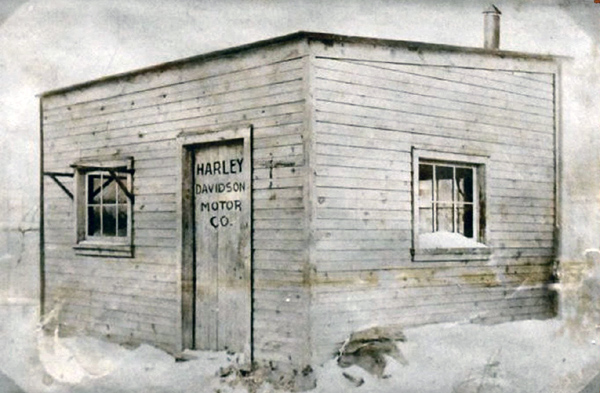
If you’re like some coders, you’ve used the “I hope it works” or “it might work” web development approach.
If you break down your development method into these terms, you can see its problems. Too often, the development changes to your site don’t bring enough value. This is why Revolution Marketing agency use and recommend MVP development for your motorcycle site.
What Is the MVP Approach?
MVP stands for a minimum viable product. With this approach, the simplest version of your motorcycle website coder is done first. Of course, the simplest version of your site will include the core functionality and a solid look needed by the end user to engage and buy.
The steps you follow with the minimum viable product are build-measure-learn (B-M-L). Notably, the extras and upgrades are not implemented until there is data. Next, we use this approach in all our site design and development, including when designing a new or working on an existing site.
The “needed by the end-user” is essential to the MVP approach. MVP aims to get users what THEY want at the lowest cost and as fast as possible so that THEY can interact in the desired way with your motorcycle site. After all, your site’s owners and web people aren’t buying your product or service. Instead, it is your biker audience that is buying.
With research, knowledge of the target audience, and experience in web development, you should have a good idea of what works. And that can be helpful. But there is nothing more important than data. Data is facts on what did and didn’t work when the simplest site or upgrades are launched. This data will help the designer of your site create new strategies for subsequent changes and upgrades.
Again, the MVP approach isn’t just used for developing new sites, including e-commerce, brochure, and membership sites. You can also use it when rebuilding a site, adding or changing larger design or functionality items, and more.
Subsequently, when launching a new site or making changes to an existing site, the MVP approach saves you both money and time. Spending significant time and money on an amazing, polished, feature-rich biker site can create problems by not bringing enough value.
Modifications are always needed after a build or changes are made to a site. However, some features and functionality added to your site often won’t be used as expected. Consequently, the time and money spent developing these extra features are wasted, and the modifications must be removed.
Note that things must be removed if they aren’t used often enough on your site. And this is because it clutters your site, which hurts your engagement and conversions. As always, you must make it simple for people to give you money! When you’re using the MVP approach, it helps your site succeed, have higher profits, lower expenses, and more.
“Maybe…” Isn’t a Good Method
Here’s an example of the “maybe” development approach. Consider if your website is fully developed with an incredible look and amazing functionality. Then it is launched, but there isn’t enough interest in some features, and sales are low, or visitors are leaving quickly.
Maybe the entire offering didn’t work. Or maybe, with some changes, the site can become a successful venture. Maybe particular functionality should have been placed in a different location. Or maybe it is the content on your website. And there are a lot of other “maybes” that might be holding your site back.
Now, one thing that happened is that your developer wasted time and money. So, your site owner might ask, who knows what happened? And there’s a simple answer to that question – no one will know. But with better research before your website’s launch or with data, your developer might have known.
MVP Example with Harley-Davidson
Furthermore, MVP web development has several steps. First, research is vital to see if there is an audience for your motorcycle product or service. Plus, you must know the cost of your product to know if people will even buy it. Also, it is essential to know your competition. Research lets you know if there are considerable barriers to entering the market.
Next, to my example, I’ll use how Harley-Davidson began as an early example of the MVP approach. In 1901, William Harley created plans to design a bicycle with an engine. The next part of the story is not that he put all his money and his family’s life savings into materials, equipment, and a new building.

Instead, the engine was built, tested, and refined. After that, with the help of Arthur Davidson, the two-year prototype build began. Eventually, Walter Davidson helped complete the prototype motorized bicycle/“motorcycle” in 1903 (build).
Still, they did not spend everything they had on large-scale manufacturing. Instead, they tested the bike by riding it to see how it performed (measure). After riding the prototype, they found the engine was too small to go up hills without pedaling (learn). Subsequently, that design was scrapped. But they learned a lot.
Noteworthy, they followed the MVP approach. They built something functional and measured the success when they tested it to get data/input. Finally, they made another version of their motorized bicycle with what they had learned. And then, the B-M-L process repeated.
Significantly, William and Arthur discovered what did and didn’t work early. So, it saved them money and enabled them to build their company. Imagine if they spent all their money on parts to make 100 of their 1901 prototype before they had ridden/tested them enough. Or what if they spent more money on cool features, accessories, or a custom paint job? Harley-Davidson wouldn’t have made it because these young men didn’t have a lot of savings or huge salaries.
But they did it correctly and used the MVP method to build their “motorcycle.” With further changes, some luck, and using a minimum viable product approach, the company has made it for 120 years.
More on the Minimum Viable Product Process
Another part of the MVP approach is that market research is done to identify your target audience. It is common for site owners to think that every rider will want to buy their product at a particular price. Simply put, this isn’t the case.
Your audience must be identified first. Also, your audience must value your product enough to pay a specific price. Then, the core website is built to appeal to your target audience using the best design elements.
One benefit of the MVP approach is that without all of the extra features, it will take less time to launch, with a lower cost, and without as much risk. Next, your MVP site is built with the correct data collection tools. After data collection, data analysis can begin, and this helps your developer better understand what changes need to be made.
Plus, there is precise data to show why changes must be made. At this point, your motorcycle website marketing expert and web designer can formulate a starting or next plan.
In summary, time and money are saved when following the MVP approach to designing and developing motorcycle sites by building only what is needed. Also, building or removing extra things that aren’t required takes time and money to remove.
Instead, making decisions based on data is critical. And the build-measure-learn is invaluable. Wasting time and money can be avoided with the MVP approach to developing websites. Finally, you can read more on our web & search services.
